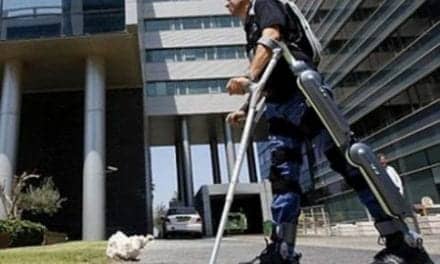Using gene therapy, researchers from Ruhr-University Bochum report success in getting mice to walk again after a complete cross-sectional injury. The key to this success, they note, is the protein hyper-interleukin-6, which stimulates nerve cells to regenerate and the way it is supplied to the animals.
In their study, published in Nature Communications, the Bochum team induced nerve cells of the motor-sensory cortex to produce hyper-Interleukin-6 themselves. For this purpose, they used viruses suitable for gene therapy, which they injected into an easily accessible brain area. There, the viruses deliver the blueprint for the production of the protein to specific nerve cells, so-called motoneurons.
Since these cells are also linked via axonal side branches to other nerve cells in other brain areas that are important for movement processes such as walking, the hyper-interleukin-6 was also transported directly to these otherwise difficult-to-access essential nerve cells and released there in a controlled manner, a media release from Ruhr-University Bochum explains.
One and Done
“Thus, gene therapy treatment of only a few nerve cells stimulated the axonal regeneration of various nerve cells in the brain and several motor tracts in the spinal cord simultaneously. Ultimately, this enabled the previously paralyzed animals that received this treatment to start walking after two to three weeks. This came as a great surprise to us at the beginning, as it had never been shown to be possible before after full paraplegia.”
— Dietmar Fischer, part of the research team
The research team is now investigating to what extent this or similar approaches can be combined with other measures to optimize the administration of hyper-Interleukin-6 further and achieve additional functional improvements. They are also exploring whether hyper-interleukin-6 still has positive effects in mice, even if the injury occurred several weeks previously, the release continues.
“This aspect would be particularly relevant for application in humans. We are now breaking new scientific ground. These further experiments will show, among other things, whether it will be possible to transfer these new approaches to humans in the future.”
— Dietmar Fischer
[Source(s): Ruhr-University Bochum, Science Daily]
Related Content:
Pfizer Doses the First Participant in Duchenne Gene Therapy Study
A Closer Look at Gene Therapy for Spinal Muscular Atrophy in Kids
Gene Therapy May Help Restore Hand Function After Spinal Cord Injury





